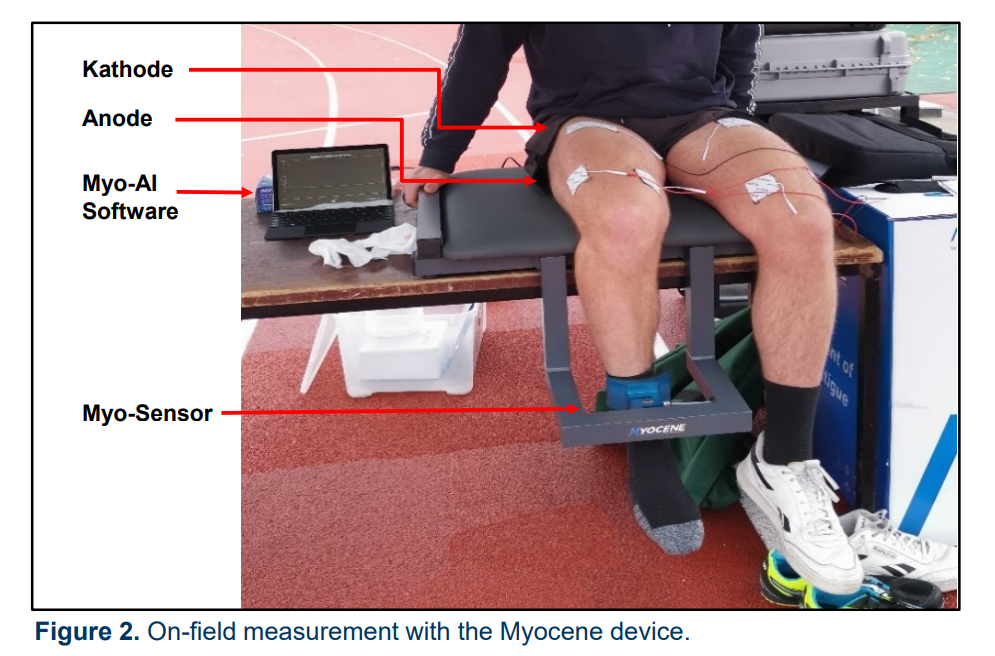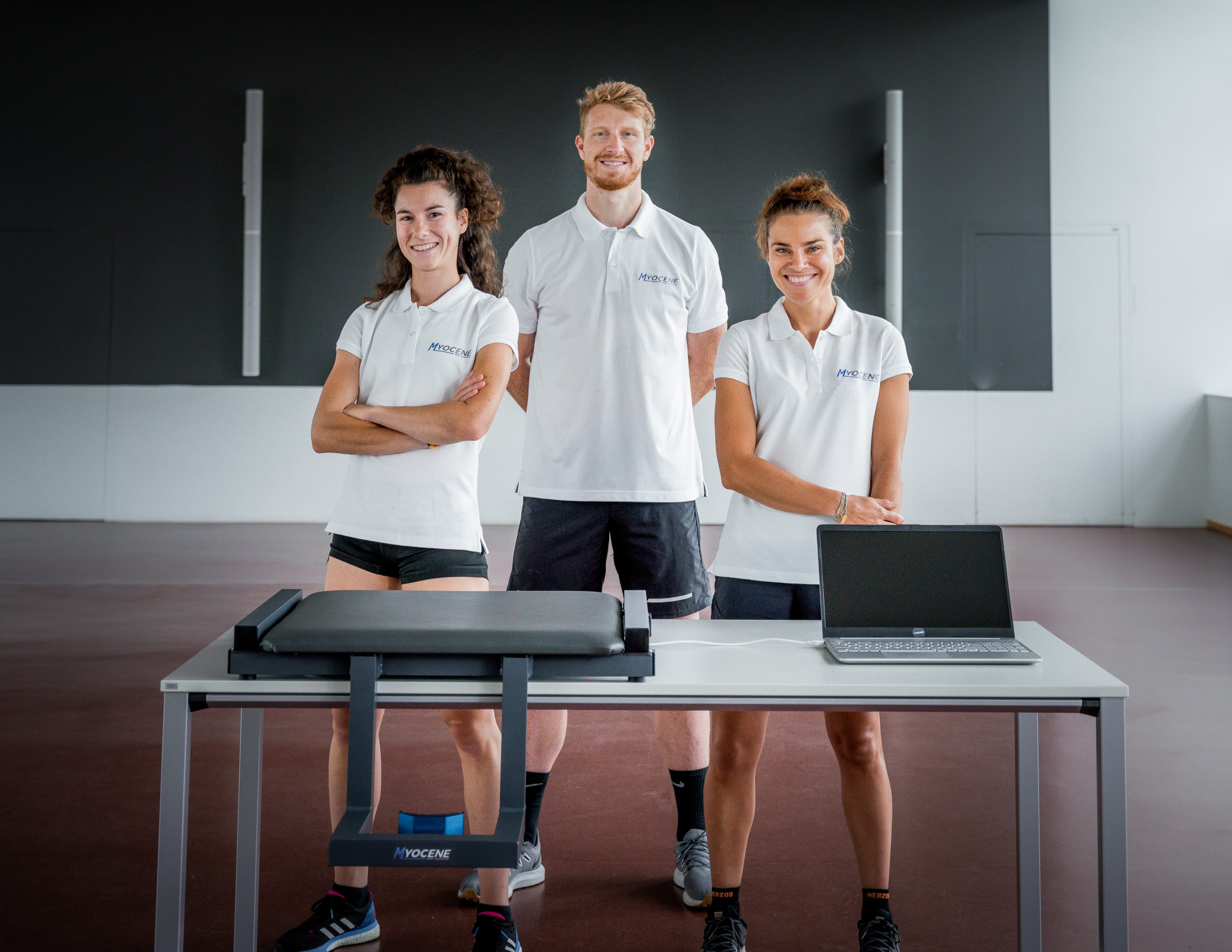In the realm of elite sports, managing athlete recovery effectively has become increasingly crucial due to the rising intensity and frequency of competitions. Ensuring athletes can recover adequately helps in reducing the risk of injuries and prevents overtraining, which can severely impact performance. A recent study by Max Riemann from Ruhr University Bochum, Germany, explored a novel method for monitoring muscle fatigue through the Myocene device that combines electrostimulation of the quadriceps muscle with force sensing. Max’s research aimed to validate the new method using the Myocene device as an effective marker of muscle fatigue resulting from various types of high-intensity training*.
→ Click here to inquire about the Myocene device.
Study Design and Participants
The study involved twelve healthy sports students, with an average age of 22.5 years, including an equal number of males and females. The participants underwent three different types of high-intensity training interventions: strength training (ST), endurance training (EN), and sprint training (SP), each followed by a week of recovery. The interventions were randomized and counterbalanced to ensure fairness and accuracy in the results.
The specific training regimens included:
– Strength Training (ST): Eccentric overload squats (4 sets of 6 reps with 70% of 1RM concentric and 100% of 1RM eccentric)
– Endurance Training (EN): Running at the 4mmol lactate threshold for 4 sessions of 10 minutes each
– Sprint Training (SP): All-out sprints of 5 seconds each, performed 4 times in sets of 6

Methodology
Fatigue was assessed using the Myocene device that measures the evoked force of low- and high-frequency stimulation of the quadriceps. Measurements were taken at baseline, pre- and post-exercise, and 24 and 48 hours post-exercise. The primary metric was the low- and high-frequency force ratio, referred to as Powerdex (PD). The results of PD were compared with changes in countermovement jump height (CMJ), serum creatine kinase (CK) levels, and delayed-onset muscle soreness (DOMS).
The study concluded that PD is a reliable and valid tool for measuring muscle fatigue and recovery in practical field conditions. It demonstrated the highest sensitivity for neuromuscular fatigue, particularly following strength training, while its sensitivity for muscle damage (indicated by CK activity) was lower, especially after sprint training. Metabolic and cardiorespiratory fatigue, commonly associated with endurance training, seemed less relevant to changes in PD.
The Myocene device is a game changer for optimising recovery management in athletes, particularly for those undergoing intensive quadriceps work in strength and sprint training. By accurately monitoring muscle fatigue, coaches and athletes can tailor recovery protocols more effectively, enhancing performance and reducing the risk of overtraining and injuries.
*Reimann, M. , Rosenthal, T. & Ferrauti, A.. Validity of low frequency fatigue (LFF) as a marker of muscle function after a strength, endurance or sprint training under field conditions. Poster presented at the 2024 ECSS conference.



